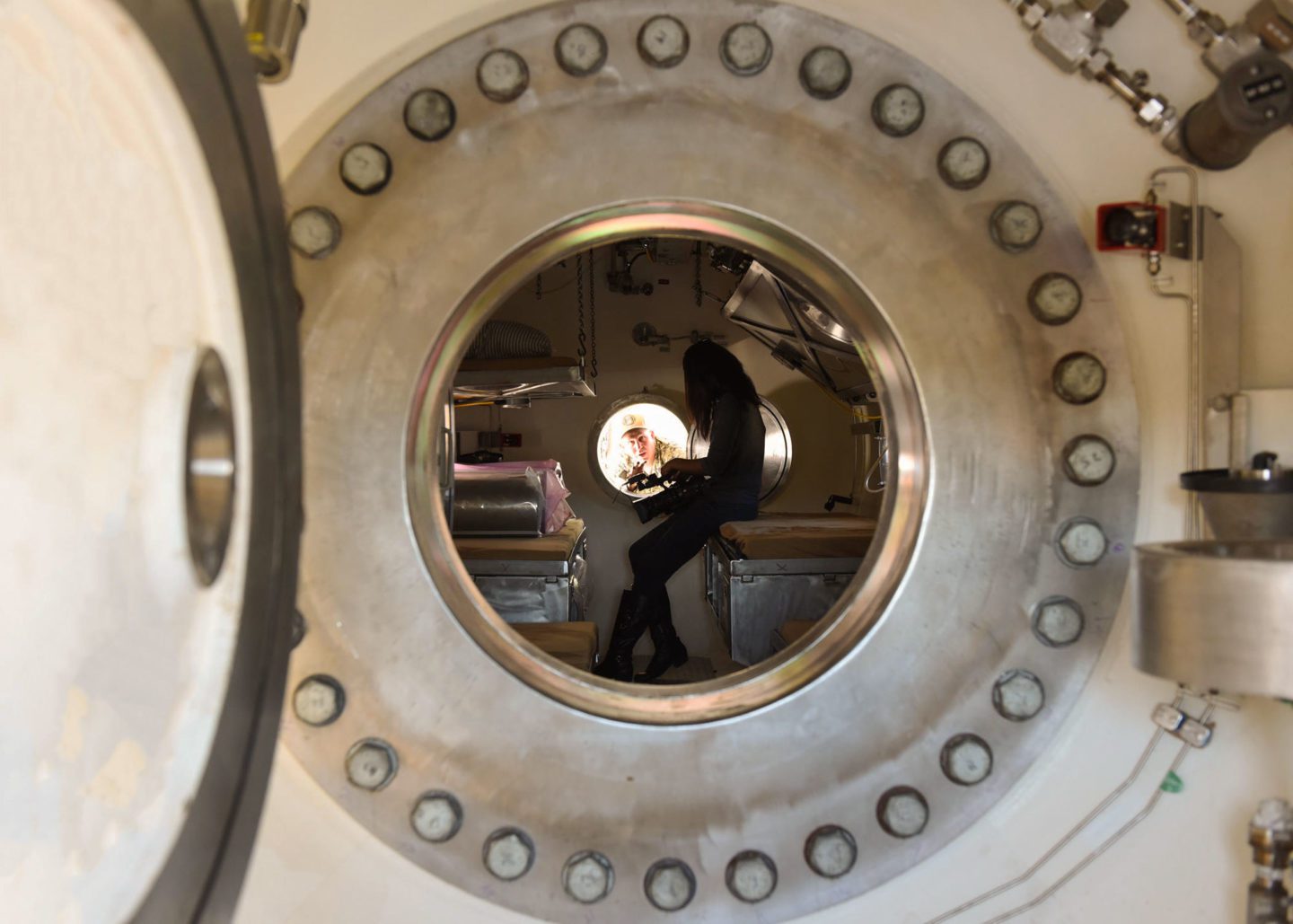Gavan Hennigan is an Irish extreme environment athlete. In his teens he suffered from drug and alcohol addiction, but after going into rehab he turned his life round. He has worked as a deep-sea saturation diver on oil rigs for more than ten years. During his time off his many achievements included completing two of the longest Arctic ultras in the world and in 2016 he became the fastest solo competitor in the 3,000-mile-long Talisker Whisky Atlantic Challenge. Here he discusses the ups and downs of earning a living in one of the most hazardous and isolated occupations on the planet.
Saturation diving (or sat diving) is a special protocol used to enable divers to go deeper for longer.
The dive begins with compression inside a chamber which is inside the hull of a large boat called a DSV (Diving Support Vessel). The vessels are ships up to 160m in length with over 100 people working onboard. They move around to different oil and gas fields throughout the world performing construction and maintenance on the platforms.
We stay here for up to 28 days at a time.
Every day we go from the living chamber via a string of tunnels called ‘trunking’ – much like a hamster tube – into what’s known as the TUP (Transfer Under Pressure). From here we climb up into another small chamber called a ‘Diving Bell’. Then the bell is detached from the main system before being winched down through the bottom of the ship via the ‘Moon Pool’ or hole in the boat. It stops about 10m from the sea floor.

The living compartment of a Saturation Fly Away Diving System. Photography: AB Forces News Collection/Alamy.
It’s all about atmospheric pressure.
Living on terra firma we are at one atmosphere of pressure, working at a depth of 170 metres we are at 18 atmospheres of pressure. The greater the pressure, the more the gases in our lungs – particularly nitrogen – dissolve into our blood and tissues. When divers come back up to the surface they have to decompress – which means allowing the compressed gas within the tissues to diffuse through the lungs. If you come up too quickly, bubbles of gas can form in your blood vessels like bubbles on the side of a glass of Champagne. This is called the bends, and is the biggest danger to a diver.
Being compressed is usually an uncomfortable process. It heats up a lot and you can feel your large joints becoming tighter as the bigger tissues take longer to saturate.
At the point when your body can’t take on any more gas, it’s saturated. Once saturation point has been reached, this allows you to stay indefinitely at any depth where you want to work, since time needed to decompress will be the same, whether the diver stays there for a minute or a week.
The chamber is no bigger than the back section of a bus.
It’s one of multiple chambers housed deep inside the DSV. Each chamber sleeps 3 or 6 divers. The teams are made up of 3 men and at any one time there could be 4 teams working around the clock on different rotations.
‘I’m still on the fence as to how much I enjoy it. Spending too many days in a chamber can really mess with your head.’
Gavan Hennigan
We are usually doing things like pipe hook ups – putting sections of pipe together that can be up to 60 inches in diameter.
We work with big cranes and remote operated vehicles. It is varied and interesting work. After our stint on the seafloor we return to the bell and then the main living chamber. We sleep and eat here – our food comes in via the sidewall of the chamber in a hatch called the ‘Medical Lock’.
To qualify as a basic air diver takes 3 months.
After that you need to work in onshore projects to get enough experience on the rigs where most people want to end up. After a certain number of dives at certain depths, you can qualify to take the saturation diving course, which is about 5 weeks long. The whole process can take anything from 2-6 years.
Diving attracts a very varied bunch of people, which is one of the reasons I love it.
Guys from all over the world usually with colourful back grounds. Naturally a lot of ex-forces guys end up diving, which makes sense as it is a dangerous job. But to be honest anyone can be a diver – sometimes it’s the guys you’d least suspect who make the best divers.
It’s quicker to get back from the moon than it is from the depths we work at.
You have to have a certain mindset to be able to live in a small chamber sometimes for up to 120 days in a year. Sat diving really isn’t for everyone, many guys don’t enjoy the living in the chamber part. You can’t just get out and go home, decompression takes up to 7 days.
I’ve had a few moments when I’ve come close to being squashed by large sections of pipe or big tools.
Equipment is usually lowered down to us by crane, but often we work in zero visibility due to the bottom being muddy. Sometimes we can sink into it up to our waist. That’s the other side to the job. If the tide is strong and the seas are a bit rough, when the equipment comes down it can be all over the place. Not being able to see it at the same time as you have to manage your diving hose makes it very hazardous.
It’s a hard crazy lifestyle.
You can get called in the middle of the night to go on a job half way around the world and be gone for 3 months. After 10 years I’m still on the fence as to how much I enjoy it. The guys I work with are mostly great, and the diving can be amazing, but it can be very grim at times. Spending too many days in a chamber can really mess with your head. Some people also worry about not knowing how long you’ll be gone for, or where the next job is coming from. But it really suits me and my lifestyle.










